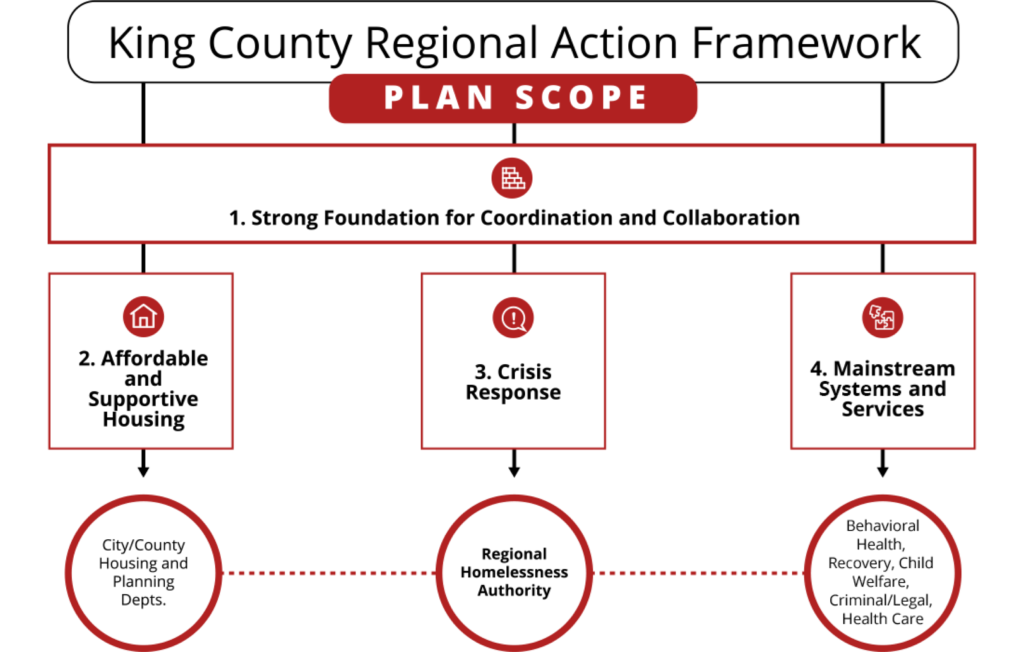10 Recommendations
Our approach was developed through deep community engagement, resulting in 10 recommendations that led to the formation of KCRHA and continue to guide our work.
- Institute a system-wide theory of change
- Consolidate response systems under one regional authority (the RHA)
- Be accountable to people with lived experience of homelessness
- Prioritize economic stability to reduce inflow into homelessness
- Improve outcomes through better data
- Design intake processes that are connected, person-centered, and radically accessible
- Expand physical and behavioral health options for people experiencing homelessness
- Create a public/private partnership using a funders collaborative model
- Increase access to 0-30% AMI housing
- Create long-term institutional alignment across systems
Learn more about each of these recommendations in the 2019 report from the National Innovation Service.
Our Theory of Change
If we create a homeless response system that centers people with lived experience, then we will be able to focus on responding to needs and eliminating inequities, in order to end homelessness for all.
Unify and coordinate
We are consolidating homelessness response for King County, the City of Seattle, and other cities that choose to participate, in order to ensure alignment and efficiency in funding, administration, and resource deployment.
Learning
We are action-oriented, with a focus on learning and making adjustments and improvements as we go.
Data-Driven Decisions
Good management depends on using the best available data to drive decisions. We are working to improve data capacity and transparency, and ensure that we’re measuring the outcomes that matter.
Housing First = Housing + Services
No matter who we are, where we come from or what we look like, every person deserves a safe and stable place to live. Housing First, which is actually “Housing + Services,” is a proven, evidence-based best practice. Housing First recognizes that housing, and the security and stability it offers, is the necessary first step to addressing other medical, mental health, or substance use issues a person may be facing, and supports employment, education, and other efforts towards self-sufficiency.
Regional Action Framework
The Regional Action Framework developed in 2020 provides and overview and recommendations for coordinated public and philanthropic efforts to address homelessness. It articulates a clear vision and priorities, recommends policies, strategies and actions, and establishing measures for success. However, it is not an implementation plan for KCRHA.
The framework is not a static document. While the framework’s development was a critical milestone in our community’s journey, to be successful we must be diligent and disciplined in our process, dynamic in our planning and rigorous in our efforts to measure progress. We will remain nimble and flexible enough to revisit the framework as needed to make mid-course corrections as needed.
The framework balances on the “3 legs of a stool,”:
- Creation and implementation of a King County Regional Homelessness Authority (KCRHA) to consolidate funding and policy regarding homeless crisis response activities across Seattle and King County, and to provide an accountability mechanism for community-wide action and alignment.
- Development of an External Partners Group to ensure that community leaders in business, philanthropy, those who have lived experience with homelessness, and advocates can coordinate and align with the KCRHA to cultivate, share, and promote solutions to homelessness.
- Design of a Framework for Regional Action, a shared vision and priorities, sufficiently resourced, with specific strategies and actions that work for the whole community.
Take a look at the framework:




